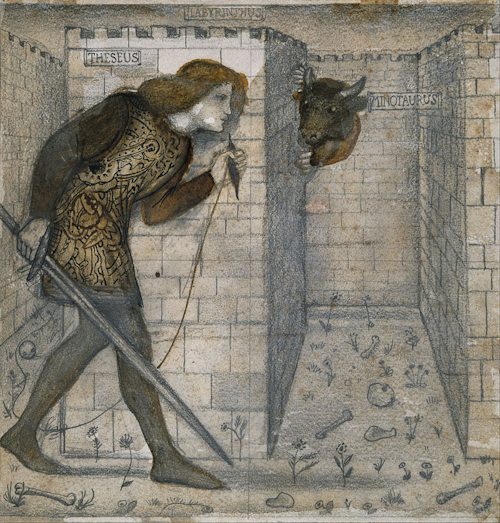The Labyrinth & The Minotaur
Illustrates Facing Complexity, Strategic Navigation
Agile transformations often stumble not because people resist change, but because the systems they operate within are full of hidden twists, unclear boundaries, and conflicting expectations. The story of The Labyrinth and the Minotaur1 reveals the dangers of navigating complexity without guidance or structure, and what it takes to lead teams out of it.

Long ago in the city of Athens, a young man named Theseus volunteered to enter the Labyrinth, a massive underground maze on the island of Crete. Inside lurked the Minotaur, a fearsome beast that demanded human sacrifices.
Many had entered before. None had returned.
Theseus was determined not just to survive, but to end the cycle. Before departing, he met Princess Ariadne, who gave him a simple tool: a ball of thread. She instructed him to tie one end at the entrance and unravel it as he walked, so he could find his way back.
Inside the Labyrinth, the halls twisted endlessly. There were false doors, echoing voices, and paths that doubled back on themselves. Theseus nearly lost hope several times. But he kept moving forward, thread in hand.
Eventually, he found the Minotaur. The battle was fierce, but Theseus triumphed. And thanks to the thread, he made his way back to the entrance, alive, wiser, and ready to change the fate of his people.
Lessons Learned
Complexity Is Not Chaos, But It Feels That Way
The Labyrinth represents modern organizations: full of roles, rules, and processes that seem logical in isolation but feel overwhelming in practice. Agile teams often find themselves lost in overlapping responsibilities, unspoken power dynamics, and shifting goals. Without a way to orient themselves, progress feels random.
Systems Need Mapping, Not Guesswork
Theseus succeeded where others failed because he used the thread to create structure in an unstructured environment. Agile teams need similar tools, visuals, working agreements, Definition of Done, service maps. These artifacts provide a common understanding of the path and make complexity navigable.
Heroics Are Not a Strategy
Previous victims of the Minotaur went in alone, hoping skill or strength would save them. Theseus had help. Ariadne's support and the simple act of mapping the way out made all the difference. Agile transformation is not about lone heroes. It is about systems thinking, team alignment, and small interventions that have big impact.
Hidden Monsters Need Naming
The Minotaur represents the unspoken problems that haunt teams, unclear accountability, conflicting priorities, cultural fear, and invisible dependencies. Teams cannot defeat what they do not name. Bringing these issues into the open is the first step toward meaningful change.
Repetition Without Learning Is a Trap
Year after year, the same mistake was made: sending people into the Labyrinth without tools or guidance. How many Agile teams repeat failed patterns? Reorganizations, rushed launches, one-size-fits-all solutions. Until we pause and reflect, we are just sending new teams into the same maze.
Coaching Tips
- Map the Labyrinth: Use value stream mapping, team topology diagrams, or workflow visualizations to help teams see the whole system. Where does work get stuck? Where is the Minotaur hiding?
- Give Them Thread: Help teams develop working agreements, escalation paths, and clear definitions for handoffs. The thread is any mechanism that prevents people from getting lost.
- Identify the Real Beast: Encourage leaders and coaches to step into the background, not solving the problem, but equipping others with what they need to find their way.
- Share Ariadne's Role: Ask teams, "What is our iceberg?" or "Where does the damage really begin?" Let the metaphor create space for reflection.
- Celebrate the ReturnMake space to reflect on progress. Coming out of the Labyrinth is just as important as going in. Debriefs, demos, and storytelling help turn survival into shared learning.
Teams do not need to be rescued. They need clarity, tools, and support. Like Theseus, they are capable of solving hard problems, but not when they are disoriented and alone. The role of the Agile coach is not to lead the charge, but to offer the thread and walk alongside.
Because the real work of agility is not slaying monsters. It is finding your way back, together.


